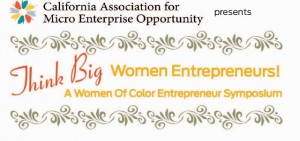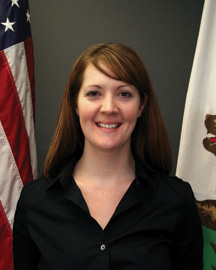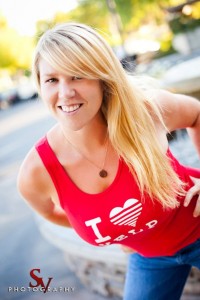A Women Entrepreneurs Symposium, 2012
Networking, Connection, Strategic Alliances
 Women entrepreneurs are the nation’s secret ingredient in the recipe for economic growth. Women-owned firms continue to grow in number at rates exceeding the national average. However, growing beyond the $250,000 to $499,999 revenue mark and at the 5 to 9 employee size class seems to be a particularly difficult hurdle for women-owned firms. What is the real hurdle? what does it take to overcome the challenges? Our fourth annual Women’s Symposium was held in Los Angeles on November 7, 2012 and was all about networking, connecting, and forming strategic alliances for expansion and growth.
Women entrepreneurs are the nation’s secret ingredient in the recipe for economic growth. Women-owned firms continue to grow in number at rates exceeding the national average. However, growing beyond the $250,000 to $499,999 revenue mark and at the 5 to 9 employee size class seems to be a particularly difficult hurdle for women-owned firms. What is the real hurdle? what does it take to overcome the challenges? Our fourth annual Women’s Symposium was held in Los Angeles on November 7, 2012 and was all about networking, connecting, and forming strategic alliances for expansion and growth.
The morning focused on women veterans business owners, why entrepreneurship is a good option for those who serve and what are the ingredients to success. Our lunchtime keynote speaker inspired women entrepreneurs to overcome one of the biggest obstacles to success (hint, ourselves). We heard the story how one woman went from the Oakland Farmer’s Market to becoming a food distributor with over 100 employees. After talking about the power and benefits of offline networking, we of course had to discuss online social networking.
Morning Program
 Lindsey Sin (bio), Deputy Secretary, Women Veterans Affairs, California Department of Veterans Affairs, presented the landscape of California’s women veterans based on a CalVet 2011 Women Veterans Survey. Women veterans in california number 167,000 – that’s about 10 percent and it’s the largest growing population in the military. Lindsey talked about four key areas which women veterans need:
Lindsey Sin (bio), Deputy Secretary, Women Veterans Affairs, California Department of Veterans Affairs, presented the landscape of California’s women veterans based on a CalVet 2011 Women Veterans Survey. Women veterans in california number 167,000 – that’s about 10 percent and it’s the largest growing population in the military. Lindsey talked about four key areas which women veterans need:
- Better outreach and more information about benefits and services.
- More gender-specific health and mental health services.
- More information and help with military sexual trauma.
- More help with service-connected disabilities, including more awareness by service providers about the impacts of PTSD on women veterans.
Women face several challenges specific to the workforce. They are more likely than men to have children and to be single parents. Women veterans on average are also younger than men – 48 and 62, respectively – and still in the workforce as opposed to be on their way to retirement. On the positive side, women veterans are self-sufficient courageous and show leadership. In order to address the special needs of women veterans, women must be at the table.
Jo Ann Martinez (bio, see video), founder of Women Veterans Connect, told us her story about leaving the military and connecting with other women veterans. “There’s nothing like the common bond of having served in military,” said Jo Ann. Since the birth of her daughter, her mission has become to show her the endless opportunity for women. What she knows is women veterans and she wanted to give back to women who are leaving the military just other women gave to her. She’s started her own non-profit that strengthens and empowers women veterans by connection, information, and mentoring support. She says entrepreneurship is a great option for women veterans:
Forescee Hogan-Rowles (bio), Community Financial Resource Center, moderated a panel discussion on Women-Veteran Businesses and success
- Lindsey Sin
- Jo Ann Martinez
- Valerie Lewis (bio, President Northern California SDVOSB/DVBE Network
- Rhea Aguinaldo, National Asian American Coalition
Valerie said that she didn’t network when she was right out of the military and that her available role models were 60 year old men. That’s why it’s really important for women veterans not to keep the secret, we they need community support, and why it’s so important to advocate. She advocate for policies that support women veterans, especially in business. In California, she and her organization were instrumental in making sure that the 3% government procurement goals for veterans wasn’t a ‘good fake effort’, but was in fact a good faith effort.
Now she’s fighting the Veterans Administration because they are not going to veterans first for procurement.
Rhea spoke about NAAC’s procurement training program that works with Fortune500 diversity officers and connects with businesses who are ready to meet procurement needs.
Forescee says government entities need to debundle contracts into smaller amounts so that small and micro-businesses can bid for them. Sharon Evans added that she is doing work that teams small businesses so that they can work together to earn contracts.
 Luncheon: Keynote presentation by Anie Borja (bio), Executive Director of National Women’s Business Council, presented new research on success factors for women business owner and how to Think Big, Get OUT of your OWN way! The thrust of her observations is that women have tremendous opportunities. Here’s a few of her observations more specifically:
Luncheon: Keynote presentation by Anie Borja (bio), Executive Director of National Women’s Business Council, presented new research on success factors for women business owner and how to Think Big, Get OUT of your OWN way! The thrust of her observations is that women have tremendous opportunities. Here’s a few of her observations more specifically:
- Women have impact. Women own 7.8 million firms that account for $1.2 trillion and employ 7.6 million. In California, there are 1.03 million women-owned businesses.
- Women play small ball. Women own 30% of the businesses, but only account for 11% of receipts.
- Size matters. Women do more with less. She says do more with more.
- Men and women obtain loans very differently. A man and a woman walk into a bank with exactly the same business plan and all circumstances. The man asks for the whole $250,000 needed to fully fund the business. The women walks in and asks for $75,000 after calculating that she can use $xx amount of her savings account and raise another $xx amount from her friends and family. This slows growth down and shows the banker that the woman doesn’t really know her business.
- The X factor – gender alone doesn’t affect performance.
Afternoon Program
 Sukhi (bio), founder of Sukhi’s Fine Foods, told her inspirational story of entrepreneurial success from being $150,000 in the hole from a failed deli to the owner of a $15 million food company that continues to grow. A few words of wisdom from Sukhi:
Sukhi (bio), founder of Sukhi’s Fine Foods, told her inspirational story of entrepreneurial success from being $150,000 in the hole from a failed deli to the owner of a $15 million food company that continues to grow. A few words of wisdom from Sukhi:
- Have our antennas out for opportunity and take it when it comes.
- Ask questions.
- You can’t make excellent food commercially, but you can make good food commercially.
- Be in a business where you can go to your customer, not one that you have to wait for your customer to come to you.
- Don’t borrow until you’re 100% sure that you will be profitable.
 From off-line networking to online networking; using technology platforms to grow and network your business with Katie Burbank (bio, see photo below center), Senior Community Manager LA East, Yelp.com. Katie talked about the free tools that businesses can use to gain more customers using Yelp! She also explained that her role as a community manager is to help business reach influential potential customers that can expand their base.
From off-line networking to online networking; using technology platforms to grow and network your business with Katie Burbank (bio, see photo below center), Senior Community Manager LA East, Yelp.com. Katie talked about the free tools that businesses can use to gain more customers using Yelp! She also explained that her role as a community manager is to help business reach influential potential customers that can expand their base.
Resources related to Think Big! objectives:
Joining Forces Mentoring Plus™ provides resources, including mentors, subject matter experts (SMEs), and online connections to women veterans and military and veteran spouses to assist them in obtaining meaningful employment and a successful career of interest to them
California’s Women Veterans: Responses to the 2011 Survey. In 2009, women comprised eight percent of the veteran population. By 2020, they are projected to comprise 10.7 percent, and by 2035 are expected to make up 15 percent of the veteran population. Women veterans have some of the same needs as their male counterparts as well as a gender-specific set of needs. Understanding what these needs are and serving women veterans will become an increasingly important function of the California Department of Veterans Affairs (CalVet) and the federal Department of Veterans Affairs (VA).
Feel free to submit resources to CAMEO.
We are grateful to our sponsors who have made this possible.
